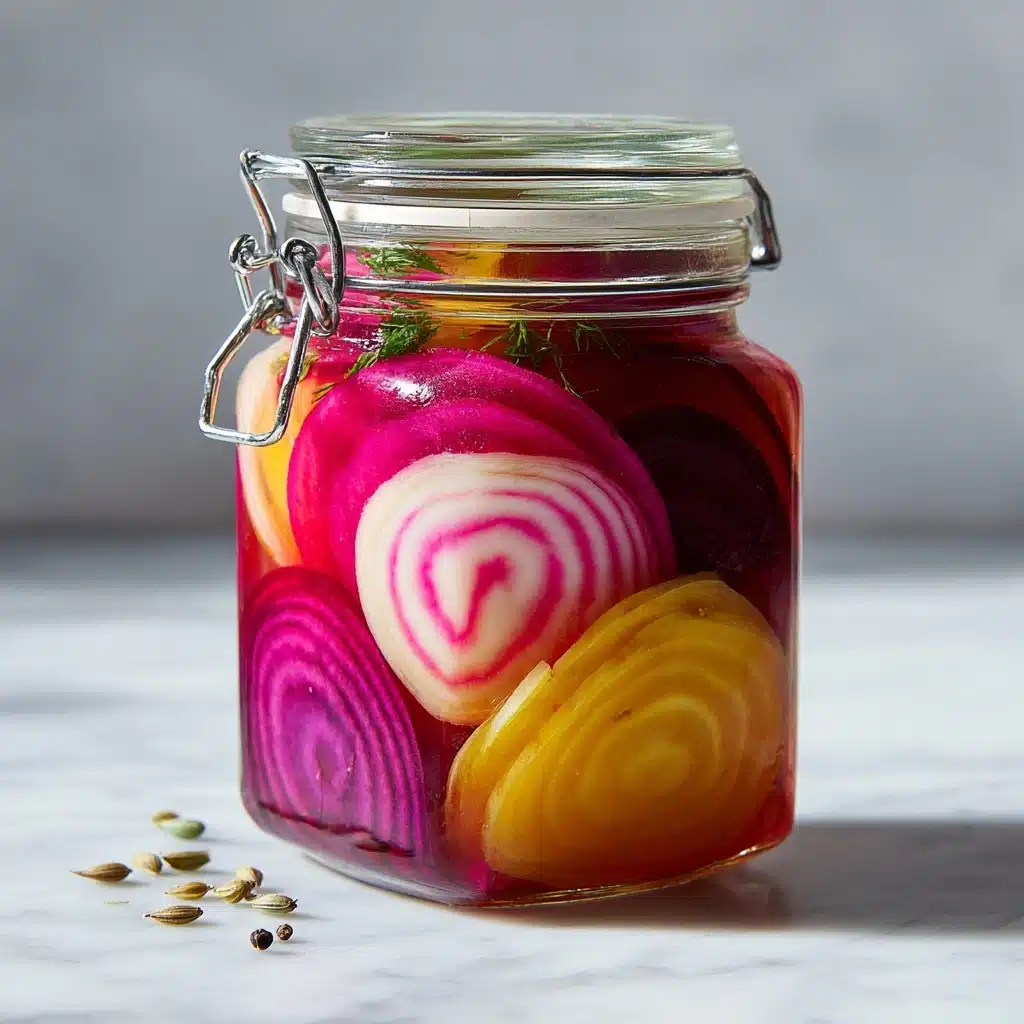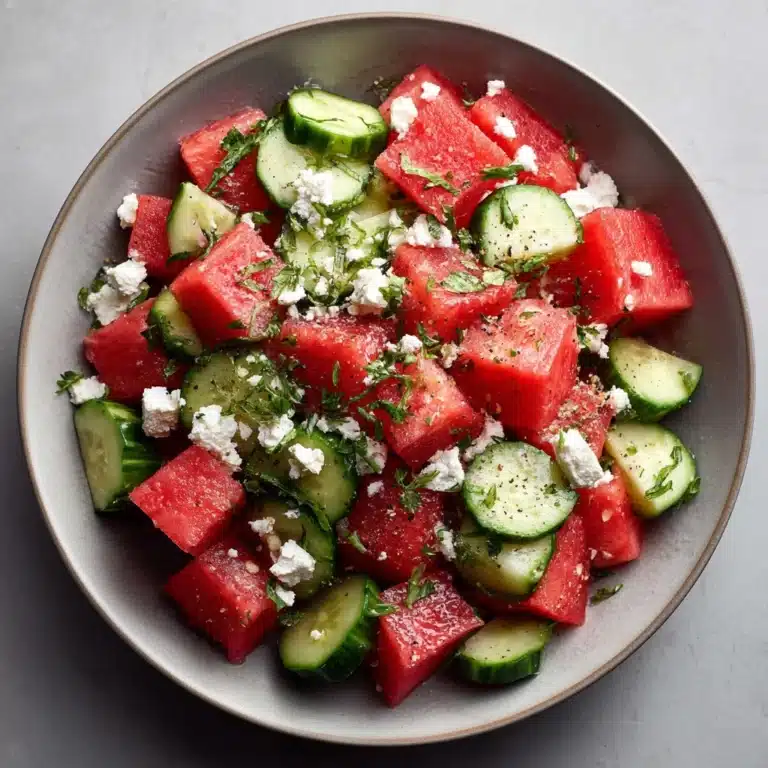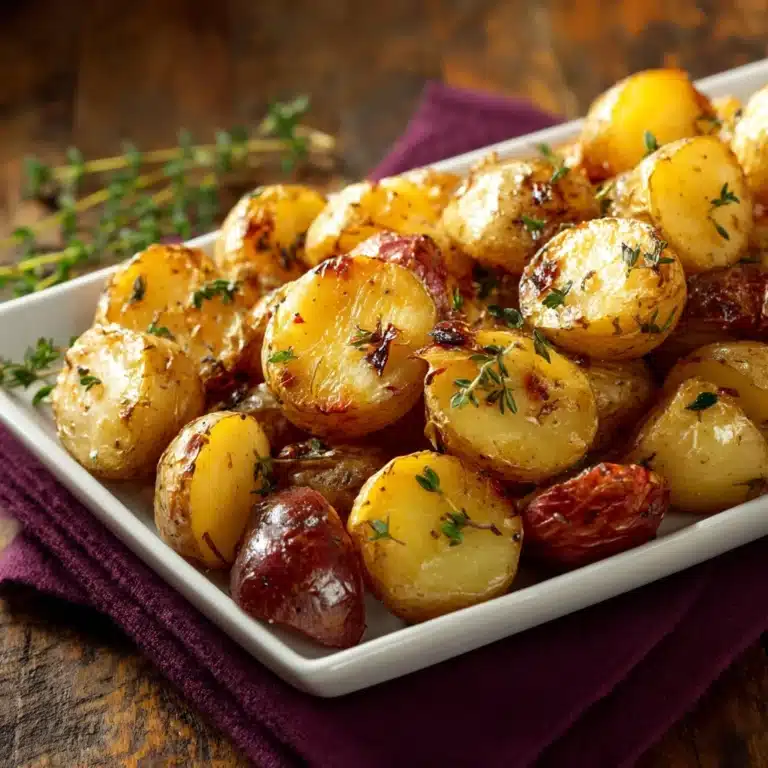If you love dishes that offer vibrant color, garden-fresh flavor, and a whisper of old-world charm, Fermented Beets are about to become your kitchen obsession. With their jewel-toned allure and tangy crunch, these beets transform any meal into a celebration. Infused with garlic, black peppercorns, and bay leaf, they pack a perfect punch of earthy, savory, and slightly spicy goodness. The best part? This recipe brings all the probiotic benefits of traditional fermentation right to your fridge, and the process couldn’t be simpler or more rewarding!
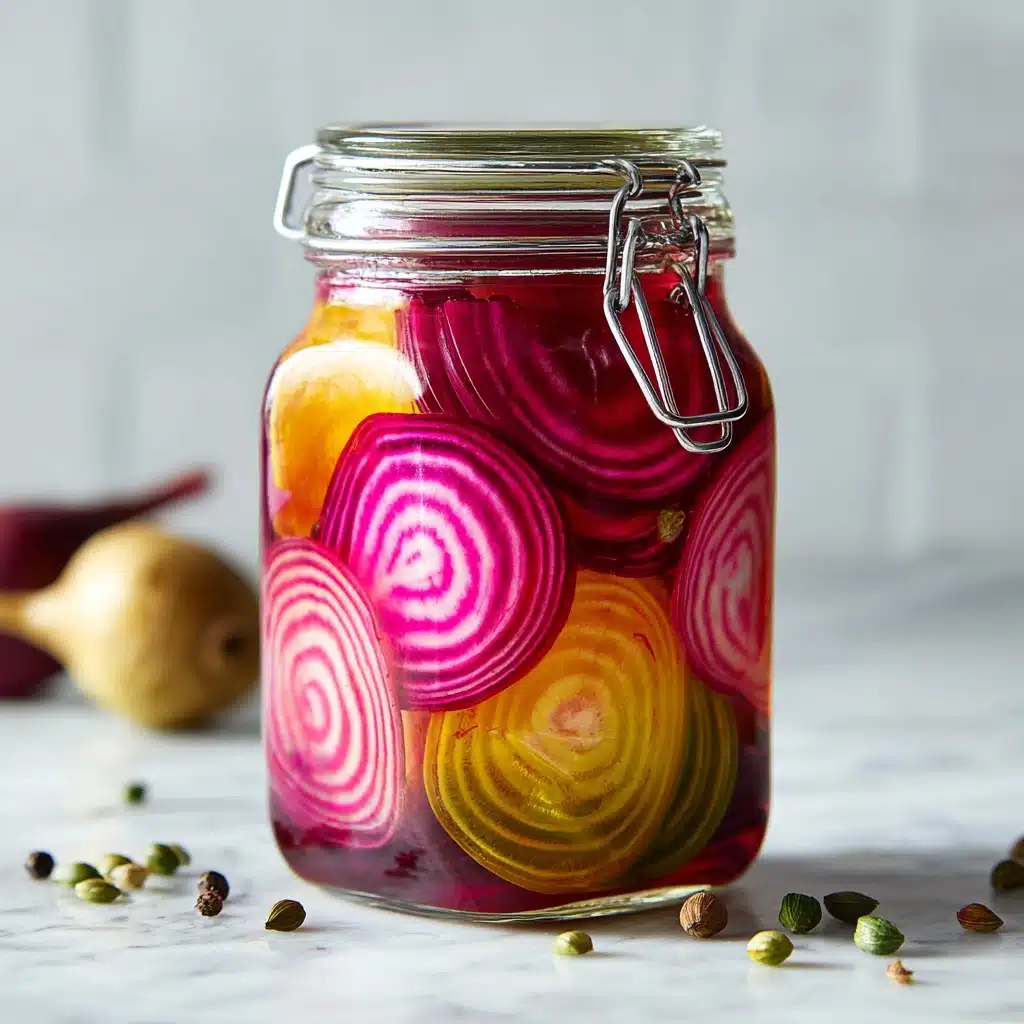
Ingredients You’ll Need
The magic of Fermented Beets stems from a handful of humble but essential ingredients. Each one plays a role, balancing sweetness, salt, aroma, and subtle heat, coming together in a symphony of flavor and color.
- Fresh Beets: Choose 4 medium, firm, and unblemished beets for the deepest color and natural sweetness. Slice them thin for quicker, more even fermentation.
- Filtered Water: 2 cups of non-chlorinated (filtered) water is crucial—chlorine can inhibit fermentation and dull the beets’ flavor.
- Sea Salt: Use 1 1/2 tablespoons of pure sea salt to create a brine that encourages beneficial bacteria while keeping harmful microbes at bay.
- Garlic: Two smashed cloves (optional) lend a gentle, aromatic heat that layers beautifully against the beets’ earthiness.
- Whole Black Peppercorns: A teaspoon tossed in for subtle, peppery warmth with just the right amount of spice in every bite.
- Bay Leaf: One leaf rounds out the aromatics, adding a faintly herbal nuance that’s classic in Eastern European fermentation.
How to Make Fermented Beets
Step 1: Prep Your Beets and Jar
Peel your beets and slice them into thin rounds or sticks—think about what will be easiest and most appetizing to grab from the jar later. Start layering them into a spotlessly clean glass jar, nestling in the garlic, peppercorns, and bay leaf as you fill. Packing them tightly ensures you maximize flavor and reduce trapped air pockets that might disrupt your fermentation.
Step 2: Make the Brine
In a medium bowl, dissolve your sea salt completely in the filtered water. This simple brine is the heart of successful Fermented Beets, protecting the beets and providing the right environment for fermentation magic. Stir until no grains of salt remain—no shortcuts here!
Step 3: Submerge and Weigh Down
Pour the salty brine over your beets, making sure every sliver is fully submerged. To keep things perfectly in place, add a fermentation weight or use a small, clean jar that fits inside your larger one. This little trick makes sure your beets ferment evenly and safely, keeping them away from any oxygen that could spoil the fun.
Step 4: Cover and Ferment
Cover the jar loosely with a lid (or use a special fermentation airlock lid if you have one). Place the jar somewhere cool and out of direct sunlight on your counter. Patience is about to pay off! Over the next 5 to 10 days, natural bubbles will start to appear, and the aroma will develop that distinctive, tangy scent. Check daily: press down any floating bits, and watch for your ideal texture and tang.
Step 5: Taste and Refrigerate
Once your Fermented Beets are as zippy and bright as you love, seal the jar tightly and transfer it to the fridge. Cold storage will slow fermentation and lock in all the flavors you’ve coaxed out. Now you have a ruby-red jar of probiotic joy ready to steal the show at every meal!
How to Serve Fermented Beets
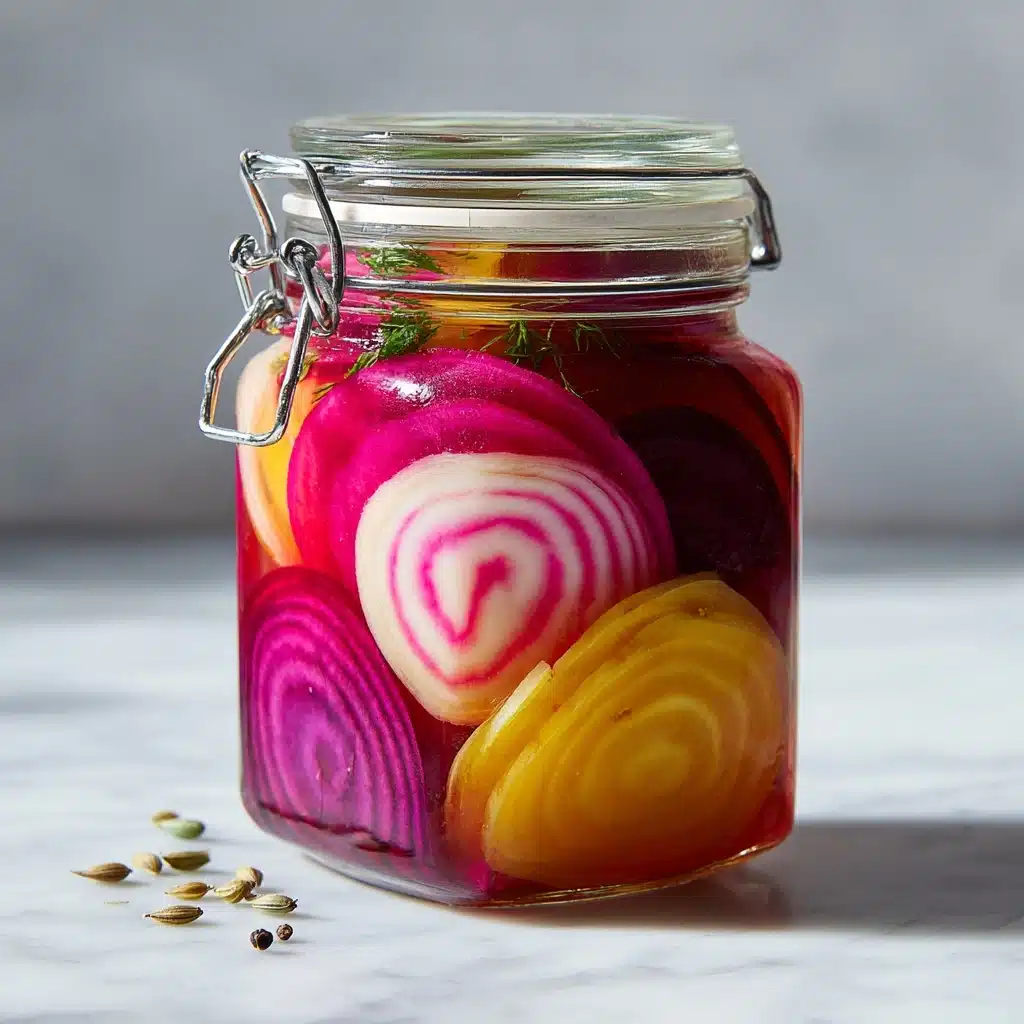
Garnishes
Just before serving, a sprinkle of fresh dill or parsley lifts the savory notes and brightens the color even more. A light drizzle of olive oil adds appealing sheen and a touch of richness, making each slice of beet visually irresistible and ready to impress.
Side Dishes
Fermented Beets shine on a mezze platter alongside hummus, olives, and crusty bread. Or, stir them through grain bowls with quinoa, goat cheese, and walnuts—they add welcome acidity and bite. They’re equally at home next to roast chicken, grilled fish, or tucked into sandwiches for a punchy crunch.
Creative Ways to Present
For a memorable starter, fan the beets across a platter, alternating with sliced avocado or citrus. Or, blitz them into a beet yogurt dip for a swirl of tang and color. Fermented Beets also love a starring role in salads; simply chop and toss with arugula, chickpeas, and a sprinkle of sunflower seeds for a plate that’s as stunning as it is tasty.
Make Ahead and Storage
Storing Leftovers
Once your Fermented Beets have reached peak flavor, seal the jar tightly and store them in the coldest part of your refrigerator. The cool temperature halts fermentation, preserving the beets’ perfect texture and sourness for up to two months (though honestly, they probably won’t last that long!).
Freezing
While freezing will halt all fermentation, it does compromise that signature crunch. If you must freeze, use only if you plan to blend the beets into soups or dips after thawing since their texture will be much softer.
Reheating
No need to reheat Fermented Beets—these beauties are absolutely best enjoyed cold or at room temperature. Heating can diminish their probiotic benefits and alter their vibrant tang, so let them shine as a cool side or fresh garnish.
FAQs
Why do you use filtered water and not tap water?
Chlorine in tap water can inhibit the beneficial bacteria involved in fermentation, leading to less lively, sometimes unsuccessful Fermented Beets. Filtered water ensures the best flavor and safest results.
How can I tell if my Fermented Beets have gone bad?
If you notice a foul smell, visible mold (fuzzy spots or colors that aren’t deep red or purple), or a slimy texture, it’s safest to discard the batch. Successful fermentation should smell tangy and earthy, never off or putrid.
Can I skip the garlic, peppercorns, or bay leaf?
Absolutely! The aromatics bring extra pizzazz, but the core recipe is just beets, water, and salt. If you want pure Fermented Beets flavor, omit any add-ins or try experimenting with other spices like coriander or mustard seed for something new.
What if my beets float above the brine?
If any beet pieces rise above the liquid, gently press them back down with your fermentation weight or a smaller jar. Keeping all the beets submerged is key for a safe, successful ferment every time.
How long do they actually last in the fridge?
Properly stored Fermented Beets can stay crisp and tasty for two months—sometimes even longer! Just use a clean utensil every time you dip in, and keep the jar sealed tightly between servings.
Final Thoughts
There’s a certain magic in watching simple ingredients turn into something tangy, bold, and brimming with color—try Fermented Beets, and you’ll see exactly what I mean! With each bite, you’re tasting a happy blend of tradition, flavor, and health-boosting goodness. Go ahead and give them a spot on your table; I promise, you’ll be reaching for that ruby jar long after you thought you’d finished!
Print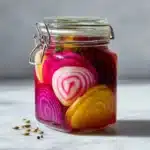
Fermented Beets Recipe
- Total Time: 15 minutes plus 5-10 days fermenting
- Yield: 1 quart jar 1x
- Diet: Vegan
Description
Learn how to make tangy and probiotic fermented beets at home with this simple recipe. These flavorful beets are perfect for salads, bowls, or as a colorful side dish.
Ingredients
Ingredients:
- 4 medium fresh beets, peeled and sliced into thin rounds or sticks
- 2 cups filtered water
- 1 1/2 tablespoons sea salt
- 2 cloves garlic, smashed (optional)
- 1 teaspoon whole black peppercorns
- 1 bay leaf
Instructions
- Pack the Beets: Pack the sliced beets tightly into a clean glass jar, adding the garlic, peppercorns, and bay leaf as you go.
- Prepare the Brine: Dissolve the sea salt in filtered water to create a brine. Pour the brine over the beets until they are fully submerged.
- Ferment: Use a fermentation weight to keep the beets submerged. Cover the jar and store at room temperature for 5-10 days, checking daily.
- Store: Once fermented to your liking, seal the jar tightly and refrigerate.
Notes
- Use non-chlorinated water for fermentation.
- Enjoy fermented beets in salads, bowls, or as a side dish.
- Prep Time: 15 minutes
- Cook Time: 0 minutes
- Category: Side Dish
- Method: Fermenting
- Cuisine: Eastern European
Nutrition
- Serving Size: 1/4 cup
- Calories: 25
- Sugar: 4g
- Sodium: 180mg
- Fat: 0g
- Saturated Fat: 0g
- Unsaturated Fat: 0g
- Trans Fat: 0g
- Carbohydrates: 5g
- Fiber: 1g
- Protein: 1g
- Cholesterol: 0mg
